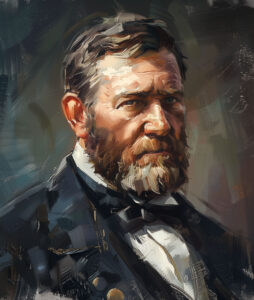The Emancipation Proclamation: Three Views
by Harold Holzer, Edna Greene Medford and Frank J. Williams, Louisiana State University Press, 2006, 184 pages, $29.95.
At the time of his death, Abraham Lincoln believed his greatest achievement was the Emancipation Proclamation. As the authors make clear in the introduction of this book, however, surprisingly little scholarship has been devoted to the issue: “Not until the document’s centennial did historian John Hope Franklin provide the very first full-length book…. Forty-three years would pass before the second Emancipation book.”
Much recent scholarship has been critical of Lincoln, questioning both the motives and results of the proclamation, and also calling into question Lincoln’s antislavery credentials. The first of these three excellent, scholarly essays is undoubtedly in the critical camp. Edna Greene Medford provocatively juxtaposes the perceived promise of emancipation against the harsh realities of life for blacks in the postwar years. Medford writes that African Americans “believed that the document, and consequently Lincoln as author, had tacitly promised them equality of opportunity and unrestricted citizenship.”
Medford also explores Lincoln’s antislavery views in depth, revealing that “Lincoln was no abolitionist. He believed the states had the right to determine their own domestic institutions,” including slavery. Medford shows how Lincoln advocated voluntary colonization for freed slaves and, in the war’s early days, reversed the policies of any of his generals who had freed slaves. Medford argues that in the end Lincoln’s promise of emancipation, and his egalitarian subtext, did not live up to abolitionist expectations.
Although Medford’s contention that emancipation raised the expectations of African Americans—and that these expectations were ultimately dashed—is indisputable, her tendency to view Lincoln as some sort of idealistic reformer outside the pressure cooker of politics is somewhat less defensible. Lincoln was continually forced to seek a balance between principles and politics, and Frank J. Williams’ outstanding essay intimately explores that difficult task.
Williams views Lincoln as a highly pragmatic politician who needed to win elections, and thus needed to gauge public opinion. He focuses on the forces that limited Lincoln’s ability to act, including politics, the law as interpreted by the Supreme Court in the Dred Scott decision, and the Constitution itself. Williams sagely points out that the legal basis upon which the Emancipation Proclamation was issued was the chief executive’s “war powers.” Lincoln’s emancipation of the slaves was based on military necessity, not vaunted principles of natural law or human liberty.
Williams explains Lincoln’s intricate border state strategy, his tireless efforts to seek workable compromises on the issue of slavery, including compensated, gradual emancipation and voluntary colonization. Yet in the end, Williams notes, Lincoln took a tremendous political risk in issuing his proclamation. Indeed, the Republicans lost several seats in Congress in the November 1862 midterm elections, and Democrats used emancipation to pummel Lincoln as a race traitor. The Lincoln portrayed by Williams is a president beset by restrictions, working courageously to do the right thing.
The third and final essay is Harold Holzer’s eye-opening and wonderfully illustrated look at the iconography surrounding the Emancipation Proclamation. Holzer explains that almost no prints of Lincoln’s deed were published in the first few years after the proclamation. Why? Holzer explains that “the proclamation, when first issued, was bitterly controversial and widely condemned, not only in the Confederacy, but also among northerners.” Printmakers couldn’t make money issuing emancipation prints until after Lincoln’s assassination, whereupon “Honest Abe” became a martyred saint and emancipation became his “miracle.”
These wildly popular prints, as Holzer points out, are problematic as historical renditions of events. They were more effective in the realm of symbolism. One Currier & Ives print titled Freedom to the Slaves shows a bent-over slave kissing Lincoln’s hand while the humble Lincoln points his other hand toward the heavens, where the “true” emancipator resides. Not all prints were so reverential, as Holzer shows. One evocative 1864 print by a Baltimore artist shows Lincoln writing the Emancipation Proclamation while the devil looks on. Vultures hover outside the window; Lincoln’s writing table is supported by legs with cloven hoofs. Holzer’s essay is a visual and intellectual delight.
Overall, these three essays make a valuable contribution to the ongoing scholarly debate about the Emancipation Proclamation. Those seeking to understand the aspirations triggered by the document among African Americans will find Medford’s essay essential reading; those who want to understand the incredibly complex political and legal restrictions under which Lincoln operated will find no better resource than Williams; and those who love the visual arts and how they interact with politics will find Holzer a revelation.
Originally published in the September 2007 issue of Civil War Times. To subscribe, click here.




